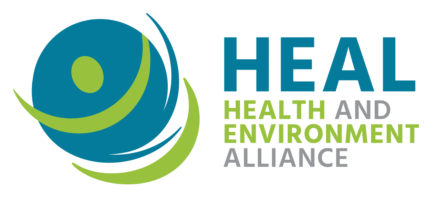As the revision of EU chemicals legislation REACH is underway, the Health and Environment Alliance urges the European Commission to uphold its commitments on safer chemicals and ensure that ambitious health protections remain at the heart of the project.
The European Chemical Agency (ECHA) Member States Committee (MSC) met on 10-12 June 2020 [1]. Items for discussion and agreement included a proposal put forward by France to identify Resorcinol as a substance of very high concern (SVHC) due to its endocrine disrupting properties for human health [2]. This was the first time that an SVHC proposal was based on the thyroid disrupting properties of a substance.
The Health and Environment Alliance (HEAL) regrets that members failed to muster consensus on the proposed SVHC identification. The Committee members acknowledged that the substance meets the World Health Organization (WHO) definition of an endocrine disruptor, but did not reach consensus on the equivalent level of concern (ELoC) necessary to identify a substance of very high concern according to REACH article 57(f) [3].
As outlined in our supporting comments, HEAL is of the view that Resorcinol indeed meets both the WHO definition of EDCs and the ELoC condition [4] for the following reasons:
- Resorcinol is a high-volume chemical, registered at 1,000-10,000 tons/annum in Europe, and used in a myriad of applications, including cosmetics, hygiene products, pharmaceuticals, flame retardants and industrial applications such as the manufacture of rubber products, adhesives and resins. Therefore public exposure can be considered high.
- Resorcinol acts on the endocrine system by inhibiting thyroperoxidase (TPO), a key step in thyroid hormone synthesis. The alteration of hormone synthesis is itself considered as a key characteristics of endocrine disrupting chemicals by the scientific community [5].
- The impacts of TPO inhibition on thyroid function are well established and clearly documented in the supporting SVHC dossier. Mechanistic data on TPO inhibition and thyroid function allows us to predict and explain biologically plausible effects of substances such as resorcinol. These effects are seen in vivo, for example through significant changes in thyroid hormone levels after resorcinol exposure in pups.
- The thyroid function is essential for human development, including brain development. Therefore any unintentional modulation of thyroid function must be seen as adverse and must be considered on the basis of potential life-long consequences. Thyroid hormone disruption during pregnancy is of particular concern for the future development of the child.
- The dossier constructed a convincing case by using the ECHA-EFSA guidance on endocrine disruptors in order to justify why Resorcinol meets the criteria for SVHC identification [6], including to:
- Support the biologically plausible link between the endocrine mode of action of resorcinol and the adverse effects observed.
- Support the human relevance of the data available from animal experiments documenting severe thyroid-related effects, including goitre, neurological impacts and hypothyroidism.
The discussion will now be taken over by the REACH committee in the coming months. For the sake of health protection, HEAL urges the European Commission and Member States to support the French proposal for identification of Resorcinol as SVHC under article 57(f) of REACH.

